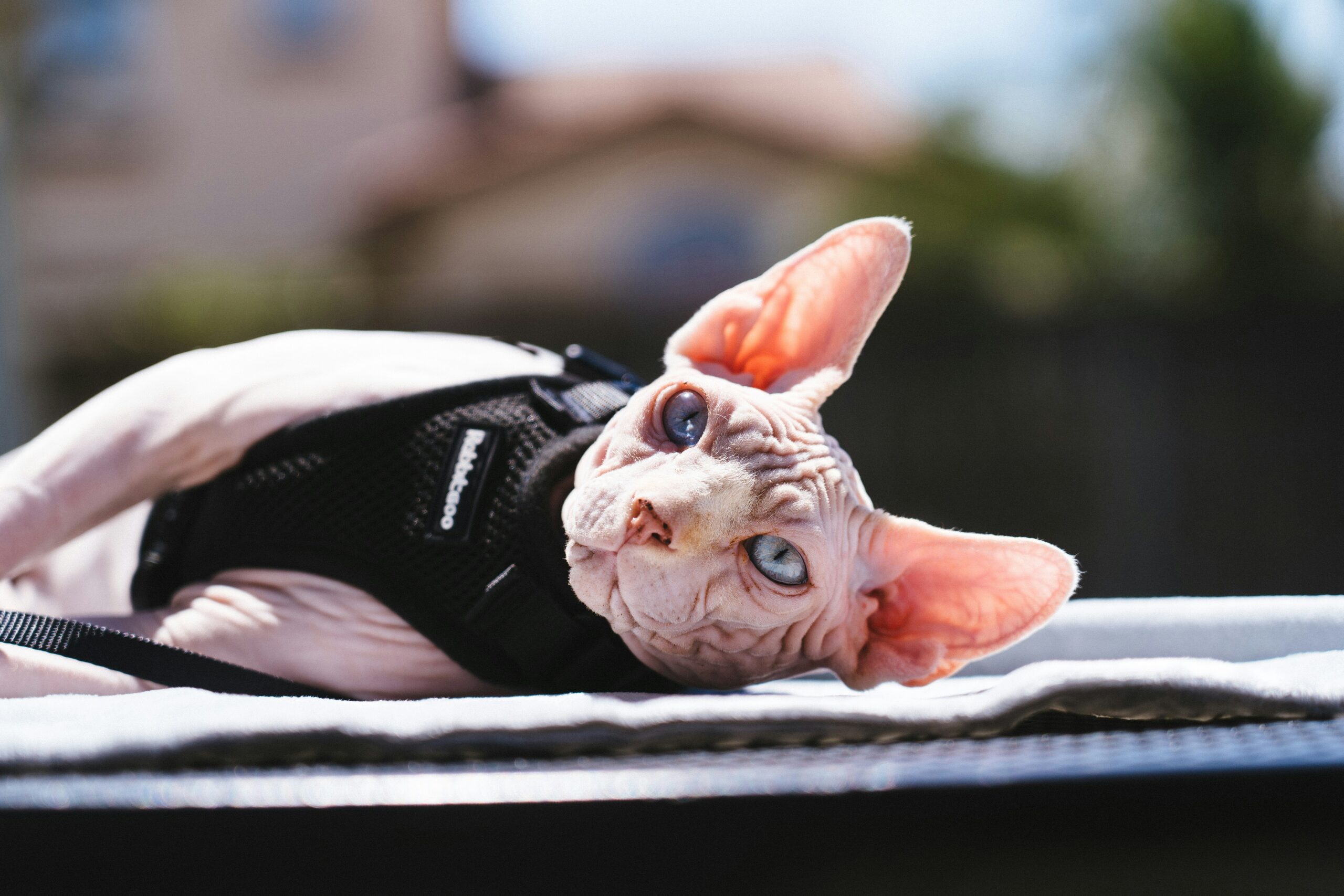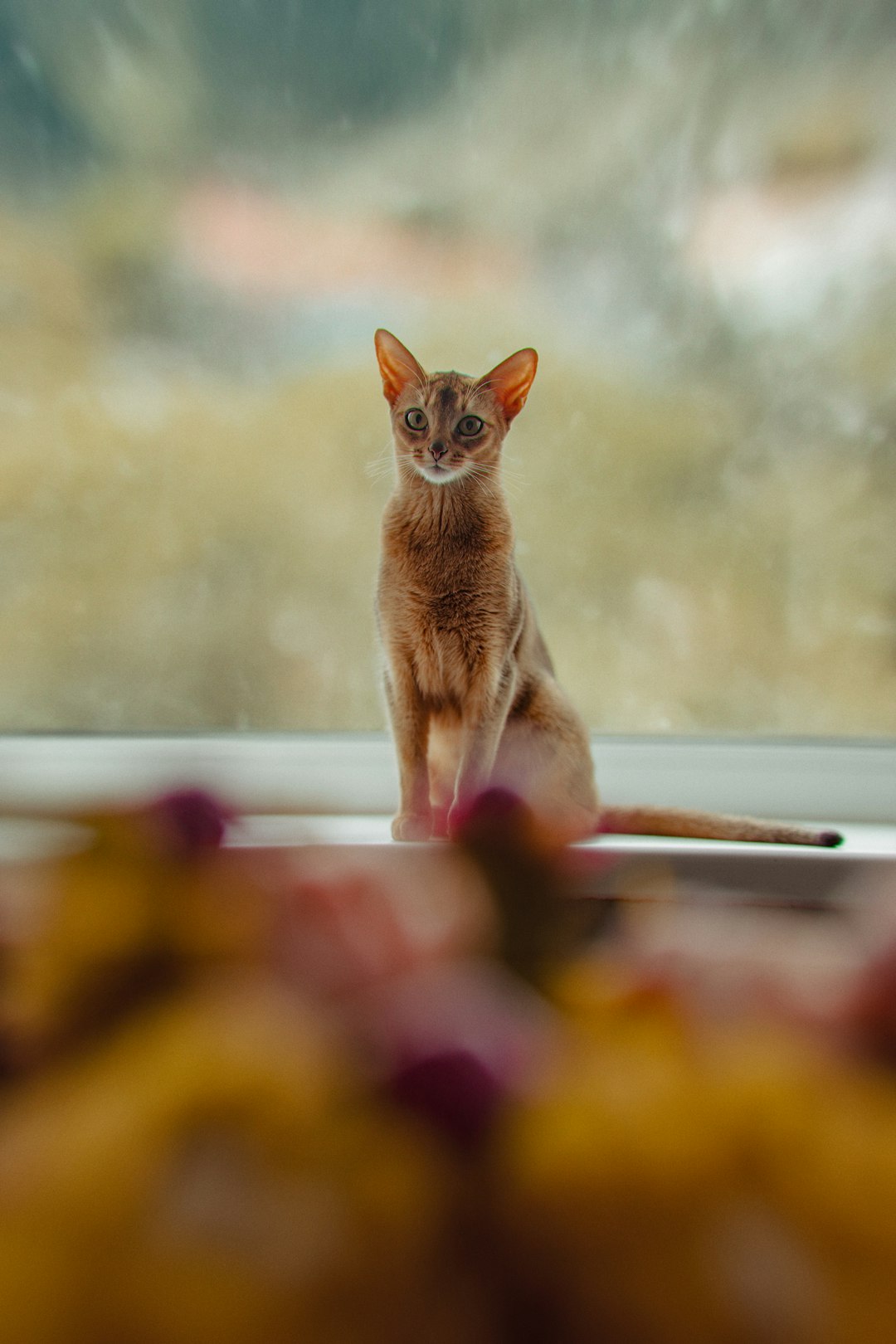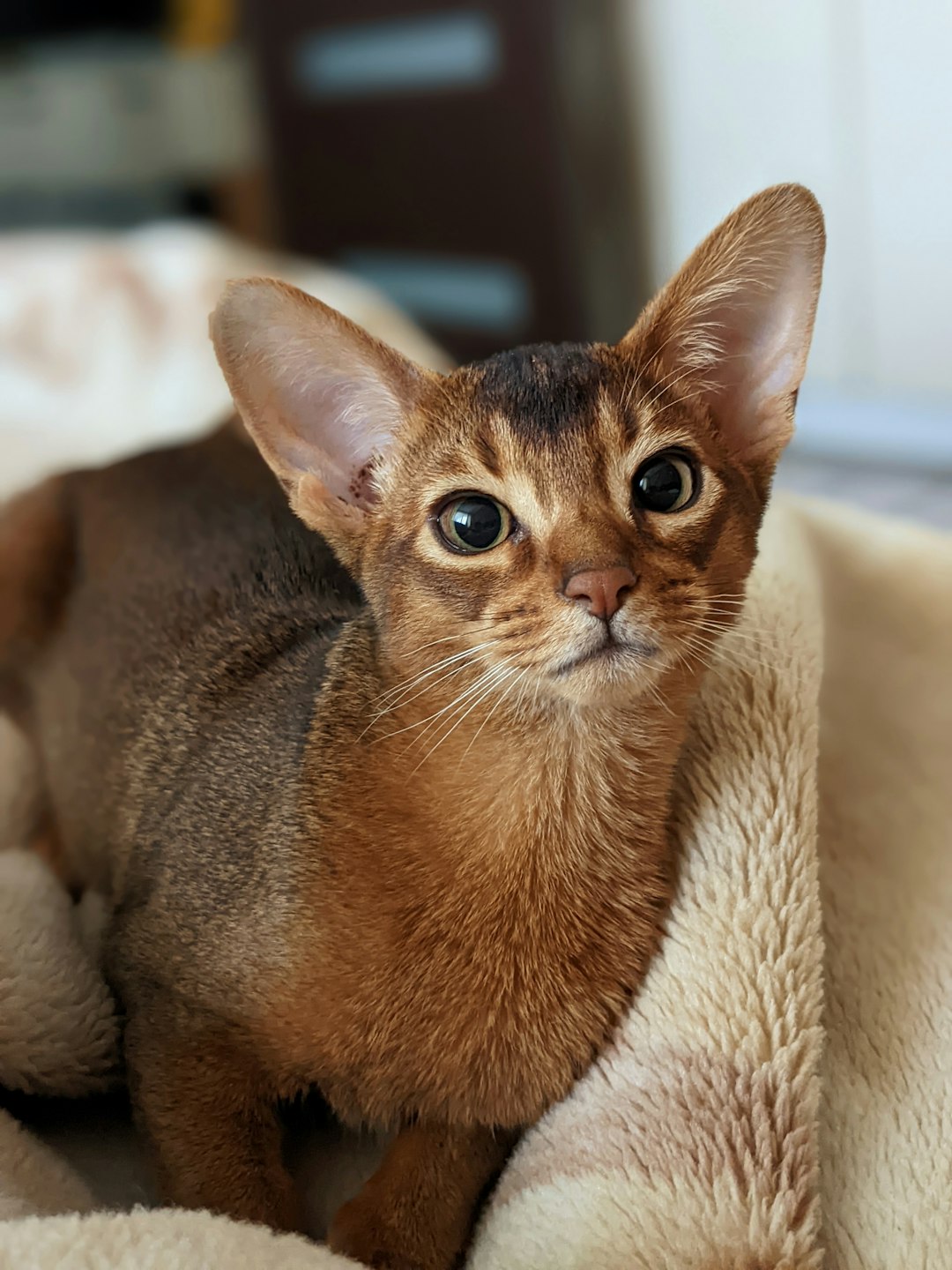If you’ve ever laid eyes on a Sphynx, you know these hairless cats are anything but ordinary. With their quirky looks and affectionate personalities, they challenge every stereotype about feline beauty. However, owning a Sphynx isn’t just about admiring the absence of fur; it requires a unique approach to care that will keep your new friend thriving. So, let’s dive into the fascinating world of hairless cats and explore the essentials of keeping them happy, healthy, and, most importantly, fabulously loved!
What Are Sphynx Cats?
Ah, the hairless cat, or as the cool kids call it, the Sphynx! This breed is a true conversation starter. Born from a genetic mutation, these little furballs lack the silky coat we often associate with cats.
- Personality Plus: Sphynx cats come with a vibrant and playful nature. They’re often dubbed the clowns of the feline world! Expect antics that will keep you giggling.
- Curious Companions: They thrive on social interaction. Think of them as your personal furry gremlins, following you everywhere—because why wouldn’t they want to be part of the action?
Quick Comparison: Sphynx vs. Traditional Cats
| Feature | Sphynx Cat | Traditional Cat |
|---|---|---|
| Fur | Almost none | Yes, varies by breed |
| Social Nature | Extremely engaging | Varies, some aloof |
| Grooming Needs | High (skin care!) | Moderate to low |
So, if you’re ready for a playful, affectionate, and utterly unique companion, the Sphynx could be the hairless cat of your dreams!
Characteristics of Sphynx Cats
Sphynx cats, those delightful little nudists of the feline world, boast a unique set of characteristics that make them both endearing and intriguing. Let’s peel back their layers (or lack thereof!) to discover what makes these hairless cats so special:
- Skin and Texture: With their lack of fur, Sphynx cats flaunt a warm, soft skin that feels like a well-loved velvet cushion. Their skin can have various colors and patterns, and it may even have an oily sheen that requires regular cleaning.
- Large Ears and Face: Their distinctive large ears lend a bold, inquisitive expression. Couple that with their prominent cheekbones and lemon-shaped eyes, and you’ve got a look that screams personality!
- Energetic and Affectionate: Sphynx cats are known for their playful antics and affectionate nature. They tend not just to seek companionship but also ensure you can’t help but adore them.
- Vocalization: Think of them as the chatty friend at a café—Sphynx cats love to vocalize! Expect a range of purrs, chirps, and cries that add a delightful soundtrack to your day.
So, if you’re looking for a fun-loving companion that’s as prominent in personality as they are in appearance, a hairless cat might just be your perfect match!
The Importance of Proper Skin Care
Taking care of a hairless cat like the Sphynx requires a little extra TLC, especially when it comes to their unique skin. With no fur to protect them, these snugly creatures are prone to specific skin issues. Here’s why proper skin care is essential:
- Natural Oils: Hairless cats produce natural oils, which can accumulate on their skin. Regular cleansing is crucial to prevent oily buildup and potential skin problems.
- Sunburn Risk: Just like people, Sphynx cats can suffer from sunburn. They need sunblock (specifically formulated for pets) and shaded areas to keep their sensitive skin safe.
- Temperature Sensitivity: Without fur insulation, hairless cats can become too hot or too cold. Maintain a comfortable environment and take extra care during seasonal changes.
- Regular Check-Ups: Routine veterinary visits can help detect skin issues before they escalate, ensuring your Sphynx stays happy and healthy.
So, if you’re up for a little extra work, the payoff is well worth it! Your hairless cat will reward you with endless cuddles and a personality as vibrant as their skin is bare.
Grooming Routines for Hairless Cats
Grooming a hairless cat might sound easy-peasy, but don’t let their lack of fur fool you! Sphynx cats require a unique grooming routine to keep their skin healthy and happy. Here’s a witty rundown of what you need to keep in mind:
- Weekly Baths: Yes, you heard it right! While most cats only bathe when they accidentally swim, your hairless cat might need a dip once a week. Use a mild, cat-friendly shampoo to cleanse their oil-prone skin.
- Regular Wipe-Downs: Everyday activities like rolling around on the carpet can leave oil buildup. Grab some pet-safe wipes or a damp cloth, and give your Sphynx a gentle wipe-down.
- Nail Clipping: Hairless cats might not have fur, but those claws are sharp! Trim their nails every couple of weeks to avoid any surprise scratches.
- Ear Cleaning: Sphynx ears can be a tad gunky. Check and clean with a soft, damp cotton ball to keep them squeaky clean.
With these tips, your hairless cat will strut around feeling like the superstar they are—skin shining and nails trimmed, ready to flaunt their royal status!
Common Health Issues in Sphynx Cats
Owning a hairless cat, specifically a Sphynx, can be an adventure full of unique challenges. While these feline pals are known for their playful demeanor and affectionate nature, they also come with their own set of health quirks. Let’s take a stroll through the common health issues Sphynx cats might face:
- Skin Problems: Without fur, the skin requires extra care. They can develop oil buildup, so regular baths keep their skin happy and healthy.
- Temperature Sensitivity: These cats are prone to overheating and chilling. Providing warm, comfy spots is essential to prevent issues.
- Dental Problems: Sphynx cats tend to have dental issues due to misaligned teeth. Regular dental check-ups help keep that purrfect smile intact.
- Heart Conditions: Hypertrophic cardiomyopathy (HCM) is more common in Sphynx cats, making routine vet visits crucial for early detection.
In short, while Sphynx cats bring joy and love into your life, being aware of their potential health issues will keep your hairless buddy in tip-top shape!
Diet and Nutrition for Your Sphynx
Feeding your hairless cat might just be the most critical part of owning a Sphynx. These little nudists burn energy like there’s no tomorrow! To keep your hairless cat happy and healthy, consider the following dietary tips:
- Quality Protein: Choose high-quality cat food rich in protein (look for real meat as the first ingredient).
- Healthy Fats: Sphynx cats often need a little extra fat in their diets for added energy and skin health. Look for fats like chicken fat or fish oil.
- Hydration: These playful troublemakers tend to have a tendency to get dehydrated. Make sure to provide plenty of fresh water, or even consider a wet food diet.
Here’s a quick comparison to guide you:
| Food Type | Protein Content | Fat Content | Recommended? |
|---|---|---|---|
| Dry Kibble | Moderate | Low | No |
| Wet Food | High | Moderate | Yes |
| Raw Diet | Very High | High | Yes |
Remember, your hairless cat’s unique nutritional needs can vary. Always consult with your vet for tailored advice because a well-fed Sphynx is a happy Sphynx!
Socialization and Behavior of Sphynx Cats
When it comes to socializing a hairless cat, you might say they come with a built-in charm. These felines are renowned for their friendly and extroverted nature, making them great companions for families and singles alike. Here’s a peek into their behavior and socialization needs:
- Affectionate Personalities: Sphynx cats crave human interaction and tend to follow their owners everywhere. They might just be your new shadow!
- Playful Spirits: Engaging playtime is vital. Toys like feather wands or laser pointers will keep your hairless cat entertained and help them blow off steam.
- Social Butterflies: They thrive in social settings, often enjoying the company of other pets and people. Consider introducing them to diverse environments to keep them well-adjusted.
Comparison: Sphynx vs. Other Breeds
| Feature | Sphynx Cats | Other Breeds |
|---|---|---|
| Social Nature | Highly sociable | Varies by breed |
| Affection Level | Very affectionate | Can be independent |
| Playfulness | High | Moderate to low |
Ultimately, socializing your hairless cat not only nurtures their temperament but also strengthens your bond. So, get ready for some quality cuddle time and playful antics!
Managing Allergies and Sensitivities
Owning a hairless cat like a Sphynx can be as rewarding as it is unique, but it can also come with its own set of challenges—especially when it comes to allergies and sensitivities. Fortunately, with the right approach, you can navigate these potential issues like a seasoned pro!
Common sensitivities to watch out for:
- Skin sensitivity: Sphynx cats have more delicate skin, which means they may react to irritants like harsh soaps or certain fabrics. Always choose gentle, hypoallergenic grooming products.
- Allergy responses: Both you and your hairless cat may find yourself sneezing due to allergens. Sphynx cats often produce less allergenic dander, so they can be a good choice for allergy sufferers. However, keep an eye out for foods or environmental factors that could trigger sensitivity.
Tips for Managing Allergies:
- Regular Cleaning: Keep your home clean to reduce allergens.
- Diet Control: Understand dietary impacts on skin health. Consult your vet for allergy testing.
- Regular Vet Check-ups: Maintain a consistent health check to catch any emerging sensitivities early.
By being proactive, you can ensure a harmonious life with your delightful hairless cat!
Managing Allergies and Sensitivities
Owning a hairless cat, particularly a Sphynx, can feel like a rollercoaster ride of joy—and occasional sneeze! Did you know hairless cats, despite their lack of fur, can still trigger allergies? Here’s how to manage allergies and sensitivities with your stylish little friend:
- Choose Wisely: Opt for specific cat litter and hypoallergenic cleaning products. You don’t want your hairless cat to turn into your roommate’s nemesis!
- Regular Baths: Give your Sphynx a bath every week to remove excess oils and dander. Think of it as a spa day for your feline—minus the candles, of course.
- Frequent Dusting: Vacuum and dust your home regularly to minimize allergens. A clean home means a happy hairless cat and even happier humans!
- Separate Spaces: Create a no-cat zone, especially in bedrooms. This helps allergy sufferers take a breather and still love their hairless companion from afar.
By implementing these practices, you’ll not only ensure your home is comfortable, but you’ll also nurture a happy hairless cat that’s as well-adjusted as it is fluffy—oh wait, scratch that!
Adopting a Sphynx Cat: What to Consider
Thinking of inviting a hairless cat into your home? Well, get ready for a whirlwind of charm, quirkiness, and a dash of maintenance! Before you take the plunge, consider these essential factors:
- Lifestyle Fit: These energetic bundles of joy thrive on interaction. If you’re often out or prefer quiet nights, a hairless cat might crave more attention than you can give.
- Cost of Care: Owning a Sphynx isn’t just about the adoption fee. Regular vet visits, skin care products, and specialized diets can add up. Set aside a budget for your new feline friend!
- Health Considerations: While generally healthy, hairless cats can have some unique health issues. Research these common problems, like skin conditions or heart issues, to stay prepared.
- Allergy Awareness: Surprisingly, some people with cat allergies find they react less to hairless cats. However, spend time with one before bringing it home to see how your allergies respond.
- Grooming Commitment: Yes, a hairless cat requires regular baths. Their skin produces oils that need cleaning—so be ready to give them a spa day!
In summary, adopting a Sphynx can be a delightful experience, but make sure you’re ready for the unique responsibilities that come with your new hairless companion!
Frequently Asked Questions
Why do Sphynx cats not have fur?
Ah, the age-old question about the fuzzless felines! Sphynx cats might look like they just emerged from a particularly enthusiastic waxing session, but fear not! Their lack of fur is due to a genetic mutation that results in very little to no hair. This mutation isn’t just for show; it gives them that signature, oh-so-smooth skin that feels like a warm peach. Bear in mind, this hairlessness isn’t just a unique trait but also means they require special care to protect their delicate skin from sunburn and temperature fluctuations.
Do Sphynx cats require special grooming?
You bet your catnip they do! Despite lacking fur, Sphynx cats still need a grooming regimen—just in a different way. Think of them as the diva of the feline world, demanding their spa time! While they don’t need fur brushing, their skin tends to accumulate oils, which can lead to a greasy sheen if left unchecked. Regular baths (yes, a real bath!) are essential to keep their skin clean. So, strike a pose, and have those towels ready for your little bald blessing!
Are Sphynx cats high-maintenance pets?
You could say they’re the high-maintenance celebrities of the cat world—think of them as the Kardashians of kitties! While they are playful and affectionate, their unique needs can require a bit more attention than your average feline. From regular baths to keeping them cozy in cooler temperatures, your Sphynx will demand loyal service. Luckily, their endearing personalities and love for snuggles make it all worthwhile. Just remember, with great baldness comes great responsibility!
What health issues should I anticipate with a Sphynx cat?
Unfortunately, even our lovely little naked friends come with a few bits of baggage. Sphynx cats can be prone to certain health issues, including heart disease (hypertrophic cardiomyopathy) and skin problems due to their lack of fur. Keeping an eye on regular vet check-ups is crucial, as well as monitoring their diet and weight to prevent obesity. But don’t let that put you off—most Sphynx cats lead happy, healthy lives with attentive care. Your love, combined with some extra vet check-ups, can ensure your Sphynx thrives!



